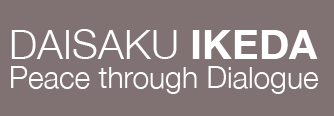Building an Ideal World Steadily with Our Own Hands (The Free Press Journal, India, Jan. 2, 2023)
This year marks the mid-point of the implementation of the United Nations’ 2030 Agenda for Sustainable Development that aims to build a world where no one is left behind.
Although there have been positive developments in many areas since their launch in 2016, the COVID-19 pandemic, climate change and the Ukrainian crisis are now negatively impacting progress toward the 17 Sustainable Development Goals (SDGs), causing setbacks and stagnation. This combined crisis has led the number of people living in extreme poverty to increase, pushed an estimated one in 10 people worldwide into hunger, and exacerbated deep-rooted inequalities in access to education.
The UN Transforming Education Summit was held in September 2022 in New York against this backdrop. The role of education in achieving all the SDGs was stressed, and the Youth Declaration on Transforming Education presented to UN Secretary-General Antonio Guterres drew my attention.
Incorporating the voices of some 450,000 young people from around the globe, this is the first such international declaration on education by the younger generation. It urges, “In order to redeem and remake the state of the world, we must first transform the state of education,” and expresses the powerful commitment of young people as leaders to transforming the era:
“[We continue] to stand in solidarity with every young person worldwide and in all our diversity, particularly young women and girls, LGBTIQ+ youth, young persons with disabilities, young refugees and migrants, indigenous youth, and other vulnerable and marginalized groups, towards transforming education.”
When I see young people determined to make the world they live in a better place through their own actions and in solidarity, I am reminded of a scene from a Buddhist scripture:
One day, many youths from a nearby town visited Gautama Buddha. Each one of them was determined not only to strive for a better life but also to build a better world. Their leader asked the Buddha how they could create an ideal land. He replied that those afflicted with hardship must not be left behind in creating an ideal world, and encouraged the youths to realize their vision through their own efforts to lead others to happiness.
This message that an ideal world does not exist somewhere far away but must be built up steadily with our own hands carries great significance today.
Although achieving the SDGs is challenging, we can bring hope to blossom in our own environment as we take action for change, reaching out to those who are suffering. And it is young people above all who are capable of rising to this challenge. Young people around the world are already working in solidarity, dedicated to solving global problems, as exemplified by their efforts to tackle the climate crisis.
The younger generation is also making ambitious efforts to promote the SDGs. For example, 3,000 young people are working to advance the SDGs in 200 universities around the world through the Millennium Fellowship program in partnership with UN Academic Impact. The efforts of these Millennium Fellows to solve problems locally are positively impacting the lives of more than 1.5 million people. It is notable that there are more than 770 Millennium Fellows in 41 campuses in India alone, standing out among other countries.
The positive reverberations brought on by 3,000 youths taking action and impacting the lives of so many people convince me that seeds of change are being sown toward a better future, no matter how severe the global situation might seem to be.
If these efforts continue, I believe that progress to achieve SDGs can be brought back on track, and that furthermore, the path to protect the lives, livelihoods and dignity of the world’s people will open up and lead us to a brighter future.
Share this page












